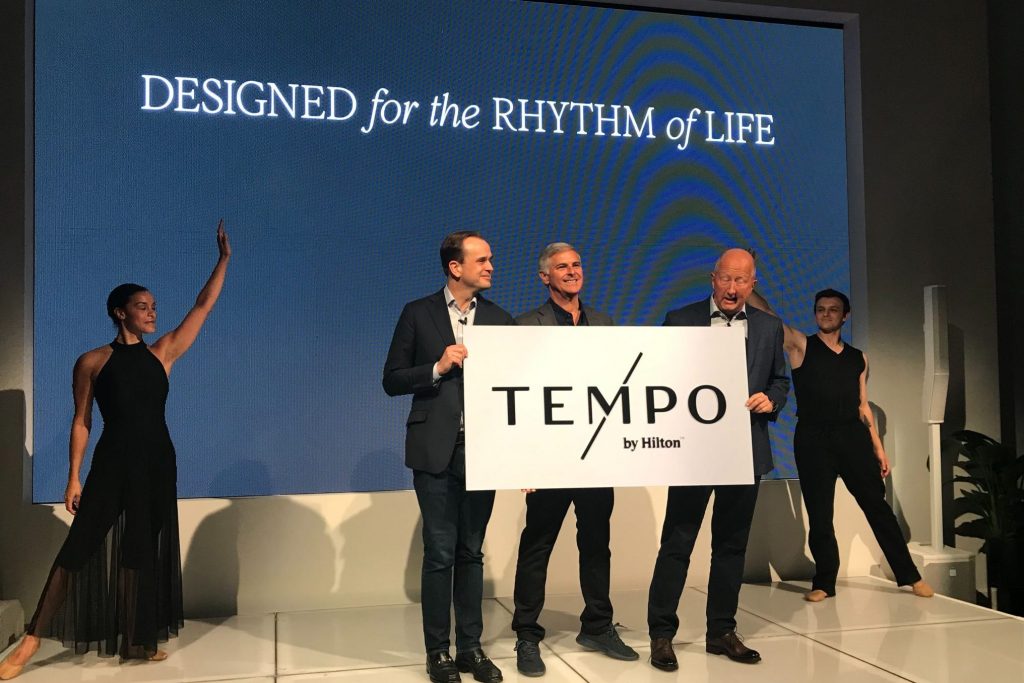Hilton Launches New Brand Tempo Into a Crowded Lifestyle Space

Skift Take
Hilton has introduced its 18th brand. Tempo by Hilton is meant to be an affordable lifestyle brand for the modern traveler. But with so many lifestyle brands already out there, how will Tempo be able to stand out?
Hotel companies hardly ever shy away from creating new brands, even when they may sound and look like ones they already have.
Hilton is the latest hospitality giant to debut another brand. The McLean, Virginia-based company on Thursday introduced Tempo by Hilton with a celebration in New York City. It is the sixth brand Hilton has created in just a bit over three years and its 18th overall. And it's probably its last addition for awhile.
Hilton is calling Tempo an “approachable lifestyle brand” for the “modern achiever.” Never mind that every major hotel company from Marriott International to InterContinental Hotels Group (IHG) to Hyatt Hotels already has lifestyle brands.
Phil Cordell, Hilton’s senior vice president and global head of new brand development, agrees that there is a glut of hotels with the lifestyle label.
“Lifestyle is a word that sometimes is kind of overused. We don’t know exactly what it means,” he told Skift. “I think early on some hotels took lifestyle to mean it was only about a design aesthetic. What are the hot colors? What are the hot scents? What’s the great music? What makes me feel hip and cool?”
Hilton is thinking of it in a different way, he said.
“We think about how our approach to life is changing,” he said. “How can I get my needs taken care of a little bit more but feel a little bit cool, a little bit elevated but not uncomfortably so?”
The definition of a “modern achiever” is just as nebulous as is lifestyle. It’s not necessarily a millennial, that coveted traveler in his or her early 20s to late 30s who is traveling and spending more. But Cordell did say that some of the characteristics often associate
